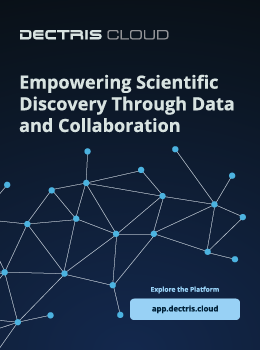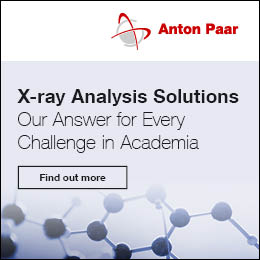
Interview
Dr Eduardo L. Gutiérrez interview
![presentation [presentation]](https://www.iucr.org/__data/assets/image/0006/160458/presentation.png)
Dr Eduardo L. Gutiérrez's presentation at LACA V.
At the LACA V meeting in 2022, held alongside the Chemistry Congress ‘Towards Sustainable Development’ in Costa Rica, Dr Eduardo L. Gutiérrez had the opportunity to present his research on pharmaceutical materials and received the IUCr Journals Short Presentation Prize – Structural Chemistry. The event, attended by distinguished figures such as Dr Javier García Martínez (IUPAC President) and Dr Hanna Dabkowska (then IUCr President), provided a platform for collaboration and recognition. Winning the IUCr Journals Short Presentation Prize – Structural Chemistry not only acknowledged the significance of his work but also awarded him an open access voucher, which was recently used to publish in Acta Crystallographica Section E: Crystallographic Communications.
We recently conducted a conversation with Dr Eduardo L. Gutiérrez about the event and recent activities:
Q: Could you tell us about your experience at the LACA V meeting? What was the highlight for you?
A: Participating in the LACA V meeting was an incredible experience. The meeting was held in parallel with the 2022 Chemistry Congress 'Towards Sustainable Development.' These events were graced by the invaluable presence of Dr Javier García Martínez, president of IUPAC, and Dr Hanna Dabkowska, president of IUCr at the time. It was truly a world-class event. Presenting the advances of our research in this context was an enriching experience, and having my presentation awarded was an acknowledgment that I greatly appreciate. Additionally, sharing the meeting with young researcher colleagues from our continent and with leading expert researchers in crystallography was very enriching.
Q: What was your prize work about and how did it contribute to the field of structural chemistry?
A: My oral presentation was titled 'Rational Design of Pharmaceutical Materials: Supramolecular Assembly of Mebendazolium and Dihydrogenphosphate Ions in a New Anthelmintic Salt.' There were two awards for presentations at the meeting: one sponsored by the International Centre for Diffraction Data (ICDD) to recognize the best presentation using powder diffraction, and another sponsored by IUCr, called the 'IUCr Journals Short Presentation Prize – Structural Chemistry,' which was the one awarded to our presentation. The prize consisted of a diploma and a voucher to be used for an open access publication in an IUCr journal. This work is part of a project from our research group, where we are focused on designing new pharmaceutical materials to improve the physicochemical, pharmacokinetic, and other properties of drugs relevant to the health of the population in our region. In this research, crystallography and crystal engineering are fundamental tools.
Q: Since winning the prize, how has your research progressed?
A: Two years after receiving the prize, I was able to complete my doctoral thesis in 2024, earning a PhD in Chemistry from Universidad Nacional de San Luis (UNSL), and I have started working in a postdoctoral position at the Institute of Chemical Technology Research (INTEQUI) in San Luis, Argentina, funded by CONICET. My supervisors in this new stage are Dr Celeste Bernini from INTEQUI and Dr Florencia Di Salvo from the Institute of Physical Chemistry of Materials, Environment and Energy (INQUIMAE). Furthermore, our project related to pharmaceuticals is continuing forward.
Q: What are your future research goals and what excites you most about your current work?
A: In this new phase, we are working on the development of new amino acid-based MOFs [metal-organic frameworks] and their derivatives, with optical and magnetic properties for use in bioimaging and as contrast agents for magnetic resonance imaging. What excites me the most is being able to find alternatives, through scientific research, that improve health and quality of life for the population, primarily in our region, but that are beneficial to everyone. This goal may be ambitious, but I believe that the collaborative work of the scientific community will help achieve these objectives as our research progresses.
Q: From your perspective, what is the current state of structural science research in Argentina and Latin America?
A: Structural sciences have experienced significant development in the region. In Argentina, particularly, there are several research groups dedicated to studies related to various aspects of materials science, both in Buenos Aires and across the country. This is the case of the research groups that are currently working in San Luis. In the region, Brazil is perhaps the leading country. The inauguration of the National Synchrotron Light Laboratory (Sirius) has been a major boost for structural sciences in Latin America. The public-private organization housing Sirius, CNPEM – Brazilian Center for Research in Energy and Materials, makes a tremendous effort to provide regional users with access to its facilities, enabling us to conduct cutting-edge experiments utilizing the synchrotron light source at Sirius. However, despite this, all countries in the region face the ups and downs of economic crises and the instability of public policies, which jeopardize the continuity of research projects in the medium and long term.
Q: What challenges do early-career researchers in your field face, and how do you think organizations like the IUCr could help support them?
A: As I mentioned in the previous answer, the challenges faced by young researchers in the region are related to the fluctuations and instability of public policies regarding science and technology research. The decision to pursue a career in research is often questioned when we are uncertain whether research projects will continue, even in the short term, due to constant cuts in science and technology funding and the disregard by governments for our activities and the contributions our work can make to improving the quality of life in our populations.
Organizations like the IUCr make a tremendous effort to fund activities related to science and technology research. For example, they fund LACA meetings and provide financial support for travel grants. These grants are extremely helpful, as travel across our continent is often out of reach for most research groups. In 2024, a new edition of the IUCr-UNESCO Open Lab was held in São Carlos, Brazil, and the financial support from IUCr was crucial in allowing young researchers at the start of their careers in crystallography to attend from various points in Latin America, from Mexico to Argentina.
Q: What advice would you give to young researchers looking to engage with the international crystallography community?
A: My advice to them is to follow their passion and not give up when challenges cast doubt on their decision. The international crystallography community is an incredible working environment, and the support from young researchers and expert professors in the field is always within reach, as we can always count on their willingness to help and collaborate. The tools that crystallography provides to address the challenges of structural and materials science research are invaluable, and it is truly worth the effort to immerse oneself in this discipline. Additionally, I recommend that they fight for their ideals and not give up when pseudosciences and discourses that discredit and deny science around the world seem to progress and establish themselves in public opinion.
![[groupphoto]](https://www.iucr.org/__data/assets/image/0017/160460/groupphoto_AMG.jpg) A photo taken at LACA V.
A photo taken at LACA V.
Copyright © - All Rights Reserved - International Union of Crystallography







